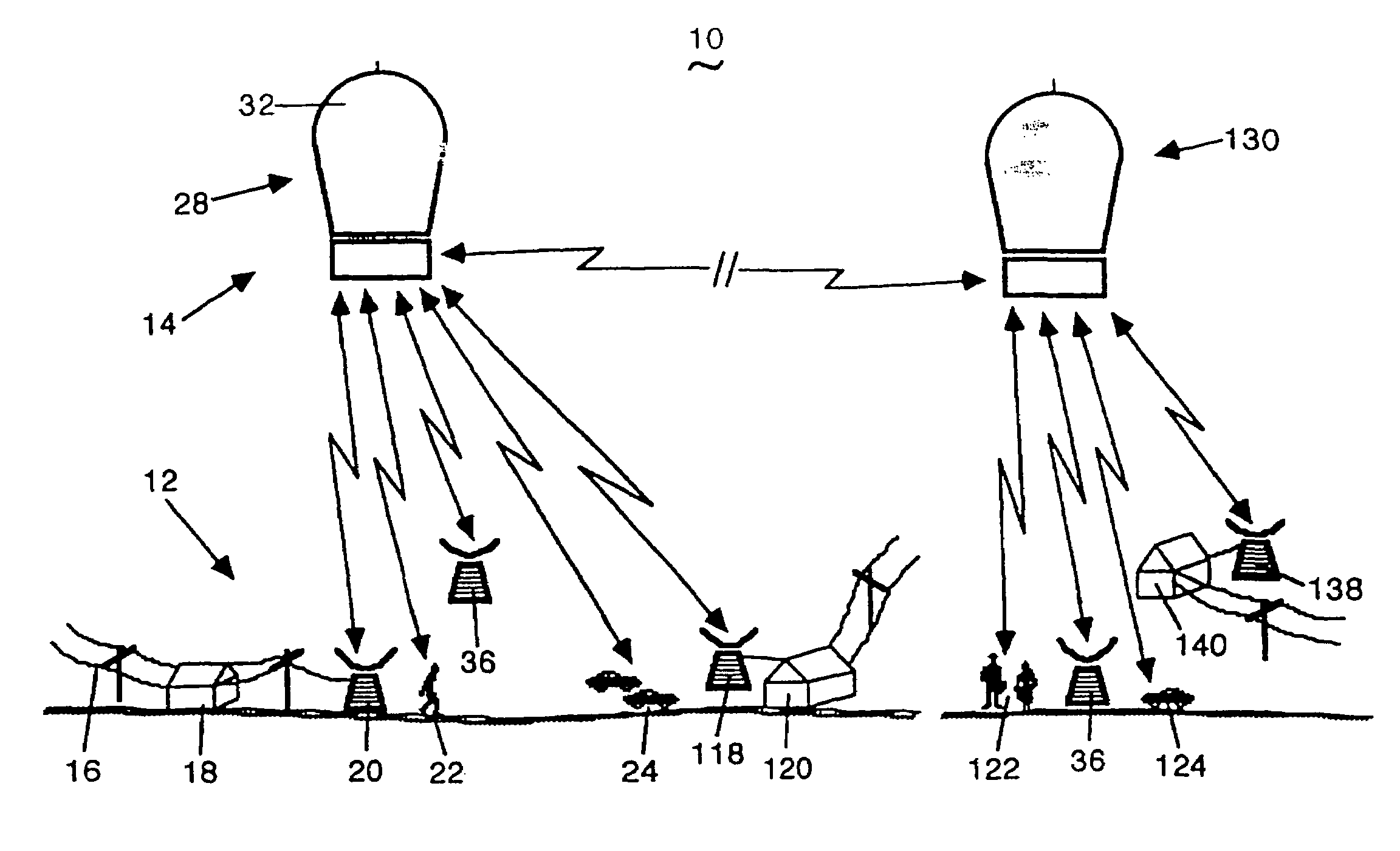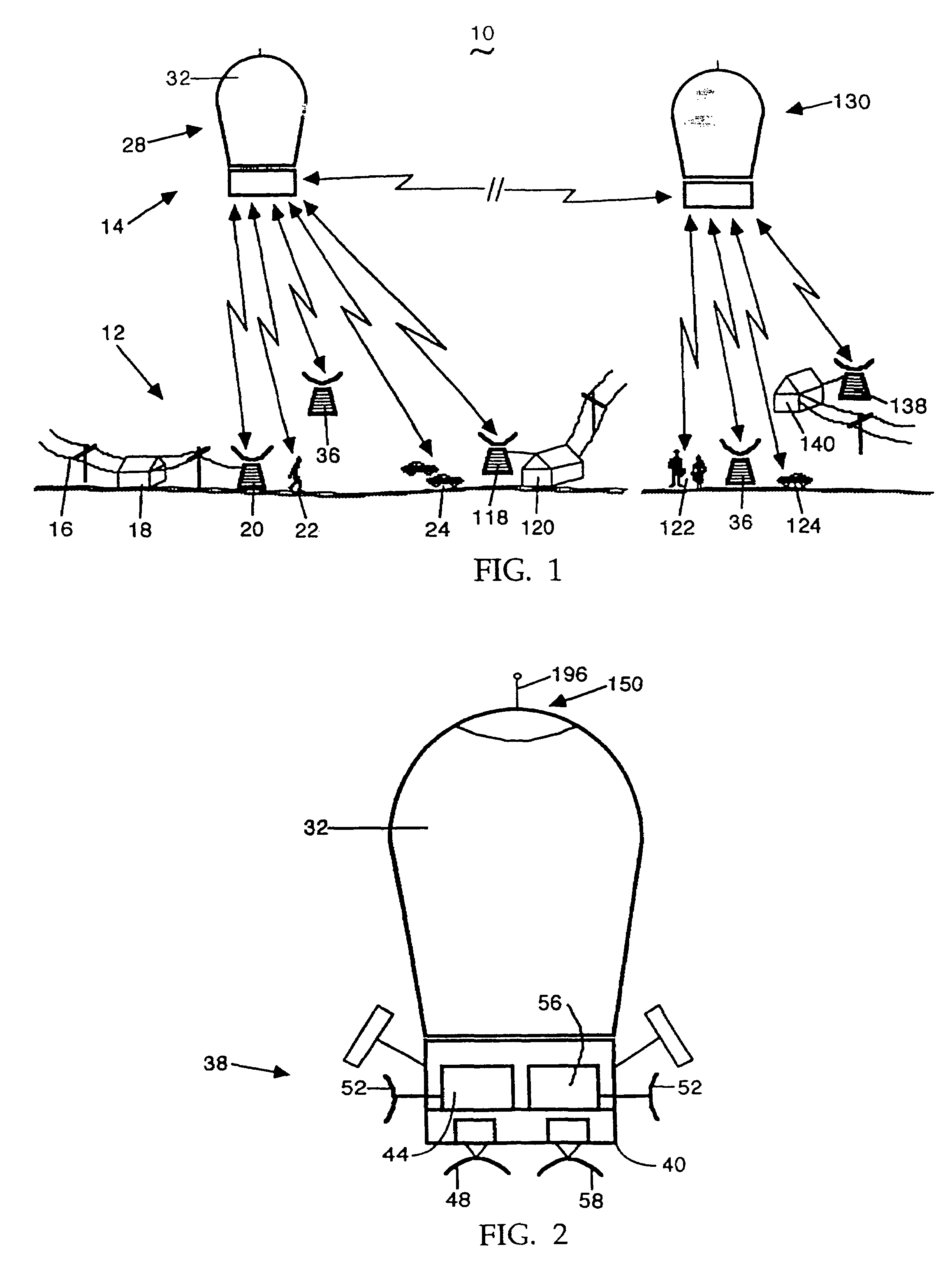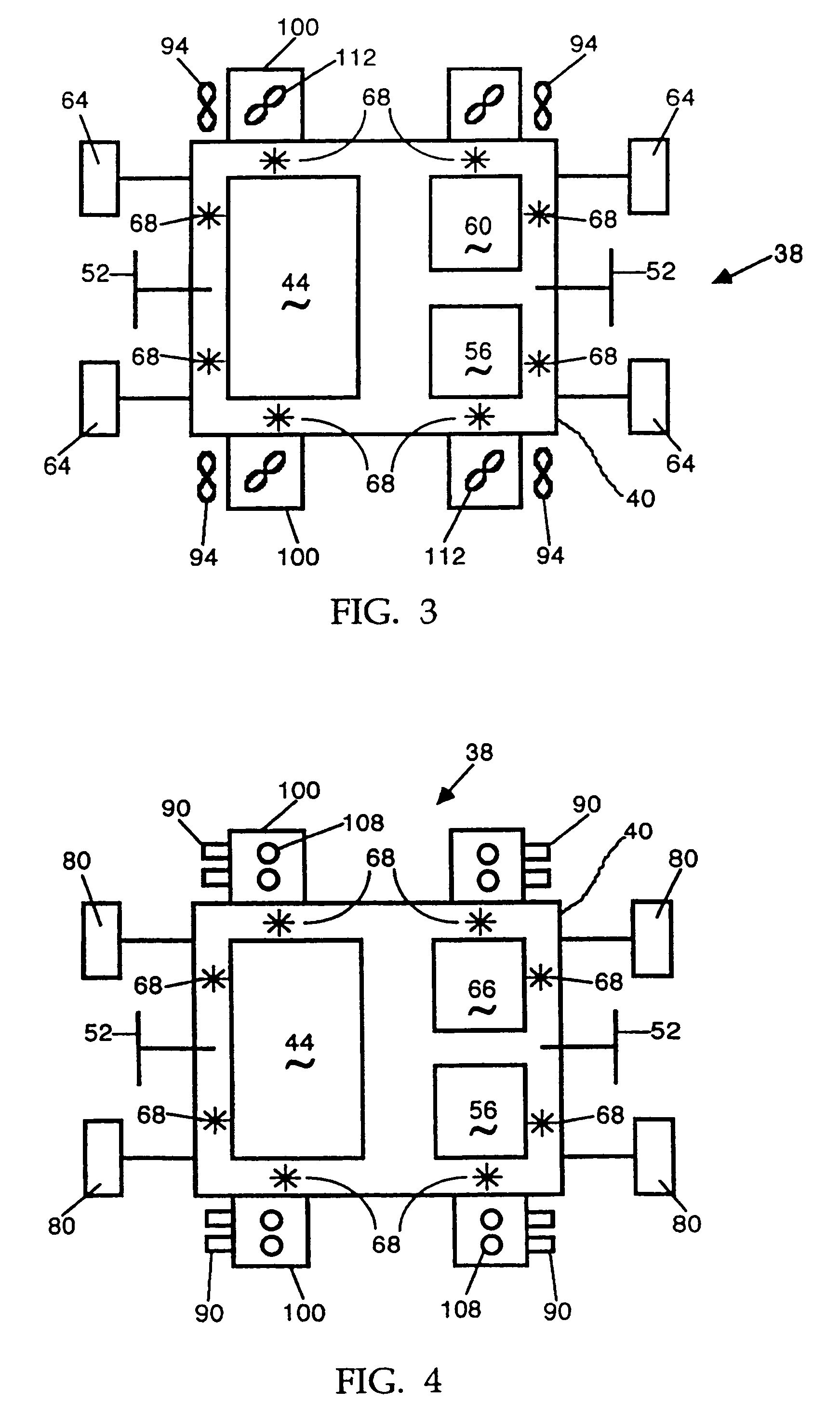Sub-orbital, high altitude communications system
a communication system and suborbital technology, applied in the field of long duration, high altitude communication system, can solve the problems of limited radio signal travel distance, attenuation problems, and relay stations can only send and receive signals from a limited distan
- Summary
- Abstract
- Description
- Claims
- Application Information
AI Technical Summary
Benefits of technology
Problems solved by technology
Method used
Image
Examples
Embodiment Construction
[0032]Referring now to FIG. 1, the system 10 comprises a ground based portion 12 and an air based portion 14.
[0033]The ground based portion 12 may comprise conventional telephone networks 16 with branches that are connected to a ground station 18 having suitable long distance transmitting and receiving means such as antenna 20. The ground based portion 12 may also comprise mobile telephones of well known types such as cellular telephones that may be carried by individuals 22 or in vehicles 24. The microwave antennae 20 are operative to transmit and receive telecommunication signals to and from a sub-orbital, high altitude relay station 28 which is located at an altitude of between about 12 to 35 miles.
[0034]Preferably, there are a plurality of relay stations 28; each one being on station at a fixed location over the earth. As presently preferred, the relay stations are designed to stay aloft and on station at least 20 to 30 days.
[0035]Each relay station 28 contains means for receivi...
PUM
 Login to View More
Login to View More Abstract
Description
Claims
Application Information
 Login to View More
Login to View More - R&D
- Intellectual Property
- Life Sciences
- Materials
- Tech Scout
- Unparalleled Data Quality
- Higher Quality Content
- 60% Fewer Hallucinations
Browse by: Latest US Patents, China's latest patents, Technical Efficacy Thesaurus, Application Domain, Technology Topic, Popular Technical Reports.
© 2025 PatSnap. All rights reserved.Legal|Privacy policy|Modern Slavery Act Transparency Statement|Sitemap|About US| Contact US: help@patsnap.com



